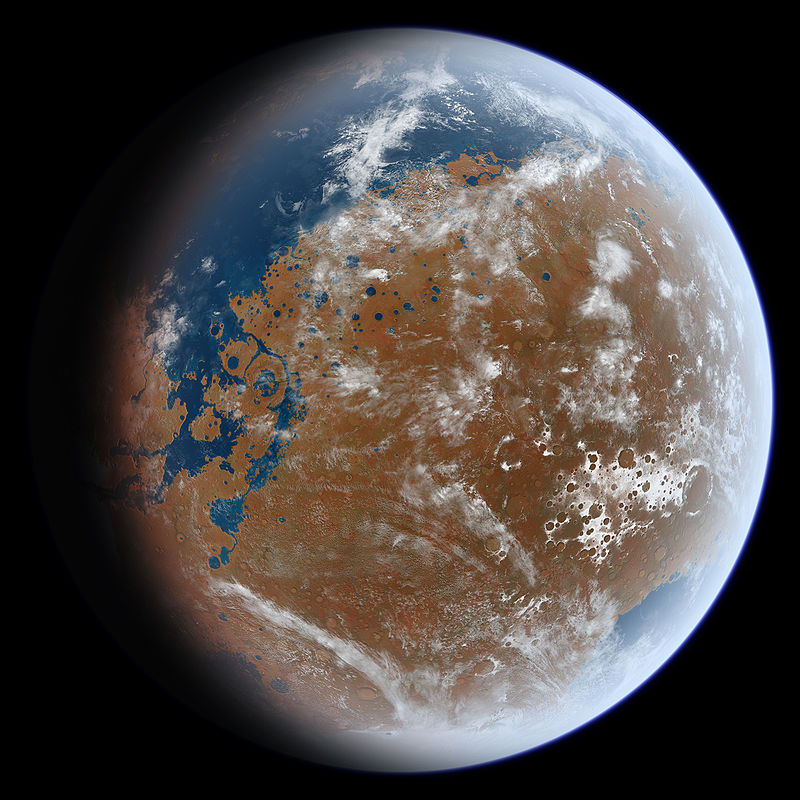water on Mars planet information by chemical Man
Almost all water on Mars today exists as ice, though it also exists in small quantities as vapor in the atmosphere and occasionally as low-volume liquid brines in shallow Martian soil. The only place where water ice is visible at the surface is at the north polar ice cap. Abundant water ice is also present beneath the permanent carbon dioxide ice cap at the Martian south pole and in the shallow subsurface at more temperate certain conditions. More than five million cubic kilometers of ice has been identified at or near the surface of modern Mars, enough to cover the whole planet to a depth of 35 meters (115 ft).Even more, ice is likely to be locked away in the deep subsurface.
Some liquid water may occur transiently on the Martian surface today but limited to traces of dissolved moisture from the atmosphere and thin films, which are challenging environments for life as we know it. No large standing bodies of liquid water exist, because the atmospheric pressure at the surface averages just 600 pascals (0.087 psi)—about 0.6% of Earth's mean sea level pressure—and because the global average temperature is far too low (210 K (−63 °C; −82 °F)), leading to either rapid evaporation (sublimation) or rapid freezing. Before about 3.8 billion years ago, Mars may have had a denser atmosphere and higher surface temperatures, vast amounts of liquid water on the surface, possibly including a large ocean that may have covered one-third of the planet. Water has also apparently flowed across the surface for short periods at various intervals more recently in Mars' history. On December 9, 2013, NASA reported that, based on evidence from the Curiosity rover studying Aeolis Palus, Gale Crater contained an ancient freshwater lake that could have been a hospitable environment for microbial life.


Leave a comment